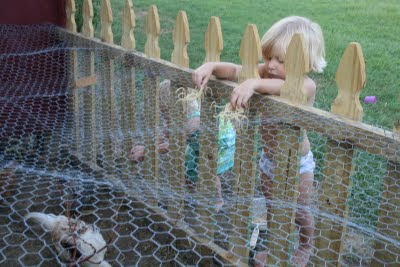
This post has been a long time coming. For Christmas last year, I got Pete a winemaking "kit", which is basically the grape juice concentrate-pre-squeezed-and some essential additives, yeast, etc. that make the whole process work. I also bought all the equipment we would need to turn it into wine! I figured this would be an easy way for us to start out and experiment with making different varietals and learning about the additives, and then maybe eventually we would squeeze our own grapes, or even grow them!
This was my wine-making bible during the process: www.grapestompers.com
Their info was a lot better than the directions the grape juice came with and we were able to compare notes between the instructions and the website and make sure we were doing everything the right way for the type of wine we were making.

The grape juice concentrate that I got was a Rioja varietal-it's Pete's favorite and it is named after La Rioja, a region in Spain, that totals 75 miles and has 14,000 vineyards. Since Pete lived in Spain and I lived in Italy, I think we'll try a Chianti next. :)
Here's how it went down:

Christmas morning-what could that be?

Our equipment is sterilized and ready to go-now it's time to mix the must! In goes the bentonite, water, and grape juice concentrate-now stir til' your arm falls off.
Now take a sample of the must and measure the Specific Gravity (SG) using a hydrometer.
Add the oak chips and make sure the temp is between 70-80F before adding the yeast. Sprinkle the yeast over the top. Snap the lid onto the primary fermenter, fill your airlock half way with water and attach your airlock and bung for a airtight seal.

In 2-3 days it should be fermenting away!

After 7 days test the SG again and record it. Continue to test every day until it reaches the point where primary fermentation has finished (differs by kit).

After primary fermentation has concluded, rack the wine into your carboy, leaving behind the sediment. Let simmer for another week and test the SG again. If it is below 0.998 proceed to the next stage-stabilizing and clearing.
It's really important the sterilize the equipment every step of the way.

Rack wine back into primary fermenter and add sulfites, potassium sorbate, and Isinglass. Stir. Wait. Stir. Rack from fermenter into a clean, secondary carboy. Top off carboy with water or a similar wine until it is full to 2" below the bung. Stir twice a day for 3 days-in about a week the wine will clear.
(are you allowed to make wine in your flight suit Pete?)

Rack it again, leaving the sediment. Depending on the kit it will take 1-3 weeks to clear.

It's ok to rack and wait, rack and wait. The more patient you are the clearer the wine. It doesn't clear after you bottle it, so if you get anxious and bottle cloudy wine, you're stuck with it!

Pour it in a glass-if it's clear and the color is good, it's time to bottle! Siphon into wine bottles-we saved up and recycled wine bottles for this.

Cork it!

Now let it rest. 4 weeks at a bare minimum-3-6 months is better.
We've just gotten to the 6 month mark with ours and it definitely has improved with age. So far, it has gotten pretty good reviews from the few people who have gotten a taste of it. I think we can safely send more samples out but these come with a warning-we have an inkling that the alcohol content is actually higher than originally predicted! It's not going to make you blind or anything, but it does make my husband act pretty silly.

 I harvest Kale, Basil, and Parsley almost every day for the rabbits, but this was our first time harvesting the lettuce and so far it's been salads every night for a week! It is amazing eating out of your own garden! Already looking forward to planting again in the spring!
I harvest Kale, Basil, and Parsley almost every day for the rabbits, but this was our first time harvesting the lettuce and so far it's been salads every night for a week! It is amazing eating out of your own garden! Already looking forward to planting again in the spring!
 I harvest Kale, Basil, and Parsley almost every day for the rabbits, but this was our first time harvesting the lettuce and so far it's been salads every night for a week! It is amazing eating out of your own garden! Already looking forward to planting again in the spring!
I harvest Kale, Basil, and Parsley almost every day for the rabbits, but this was our first time harvesting the lettuce and so far it's been salads every night for a week! It is amazing eating out of your own garden! Already looking forward to planting again in the spring!













































